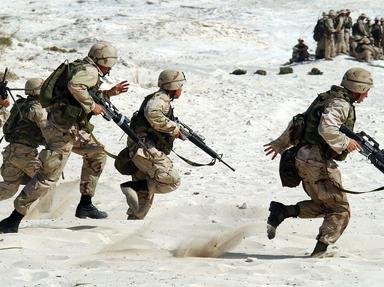
Tales of Turning Point Battles Quiz
Since the American Revolution, the U.S. has been involved in approximately 100 direct armed conflicts. Can you correctly match these turning point battles from the 18th and 19th centuries with the corresponding war?
A matching quiz
by ponycargirl.
Estimated time: 4 mins.
- Home
- »
- Quizzes
- »
- History Trivia
- »
- U.S. History
- »
- U.S. Wars
